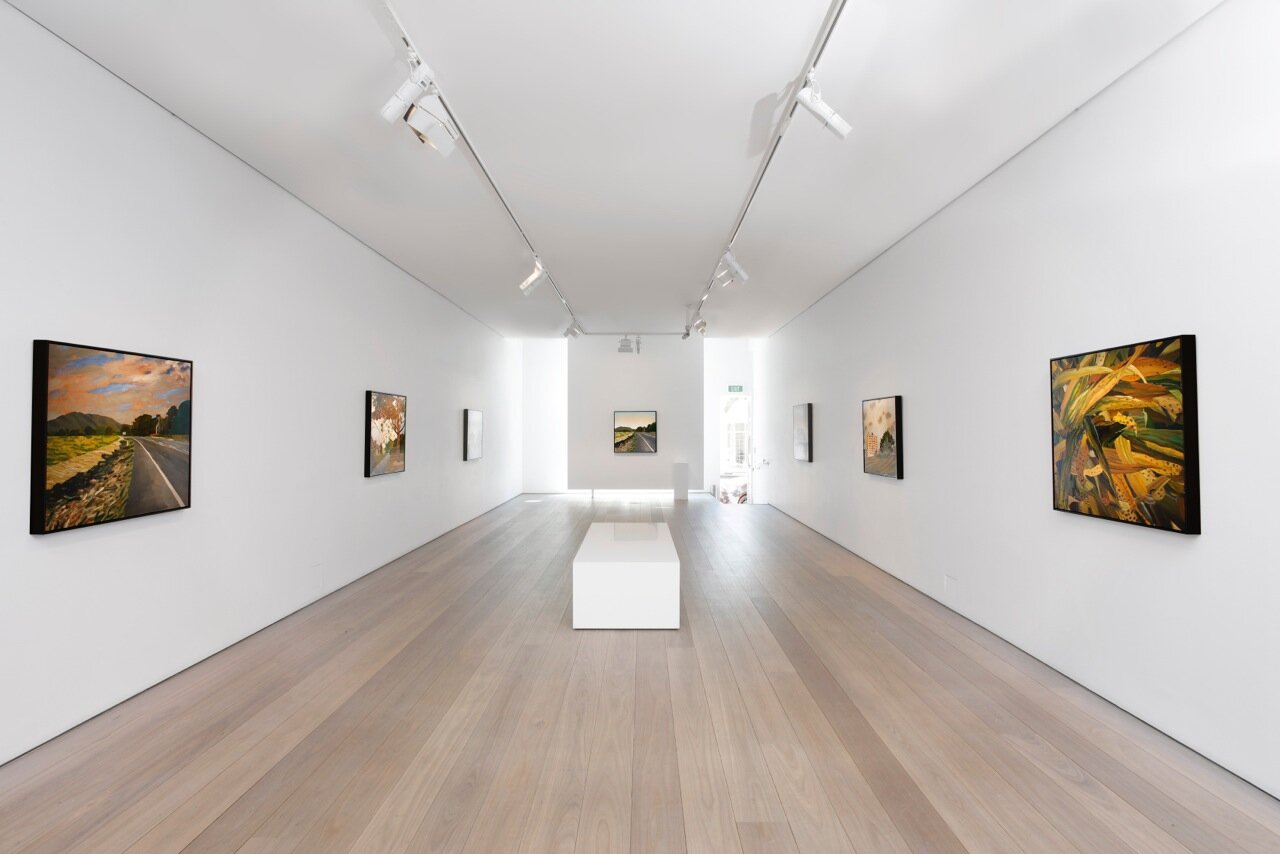‘Alan Daniel Jones’ catalogue foreword by Tim Olsen
'Painting 148 (From Dunningham Reserve)', 2015, acrylic on linen, 117.5cm x 112cm
Alan Daniel Jones
By Tim Olsen
It might sound odd, but I think of Alan Daniel Jones as a kind of young Dutch master of the Australian landscape. His work, with it’s bleached, austere palette and fixation on the raised horizon, sometimes reminds me of Vermeer. Not because the surfaces are glassy and heightened in detail, but for the quality of stillness and introspection his work inspires. His skies possess a delicacy of touch just as his brushy bushy foliage, that always seems true, whilst pushing a tough aesthetic, accurate to the shifting conditions of light.
Jones can tramp out in to the empty flats of Gunnedah, and still find something pertinent in that dry earth and those pale sun drenched clouds. His work confronts the viewer to face their own isolation and solitude, just as it creates an immediate connection with the places we drive by or fly over. His painting is very restrained but sometimes it can burst forth with a flash of eccentricity. The large scale (almost life sized) nudes he showed with us last year and, Painting 131 (North Coogee), the work that won the Mosman art prize, revealed a nervous, slightly crazed line that can only be his. His bold characteristics as a draftsman show the spontaneity that can comes from mastering his medium. And there is also something infinitely patient and solid about his practice. Like Fred Williams, he isn’t scared of silence or the slow steps of time. His self portraits have psychological self effacing depth because they reveal doubt and it’s the doubt of the everyman, not just the young artist. A paradox where uncertainty is overtaken by modest confidence.
In a subtle way, Jones has experimented with and expanded his subject. When he made landscape from the ancient carpenter’s art of marquetry the forms were wedged together like a jigsaw puzzle. So in each scene you were dealing with a two dimensional surface reflecting a vanishing point perspective. It was the moment when his painting’s took on the quality of a Trompe L’oeil, challenging our sense of surface, contour and depth of reality. Here we see that craftsmanship belongs to high art.
When you are surrounded by a broad range of landscape painting, you grow up soaked in those traditions, it can make you a little more visually demanding, both as a dealer and a collector. Yet because landscape is the genre that continues to dominate our museums and gallery walls, it’s very important that we continue to challenge young contemporary painters to tackle such traditional turf. In the past century I think Australian art has had the tendency to either romanticise the landscape into a realm of fertile myth or, conversely, to strip it back to the rough justice of the drought. Visually, it’s either feast or famine. The subtle power of Alan Daniel Jones as a painter is that he hovers somewhere in between these extremes. His coastal scenes exude exactly that feeling of wind and water with the sparest of means. His suburban streets hold the tension of sentiment and memory. The urbane ordinariness of the subject, do not prejudice that these are thinking environments, where it’s occupants are anything but ordinary. These homes are places of powerful memory. His paddocks and mountains have the sculptural heft of someone who has probably been looking at Cezanne a little too long. The work is tough. It doesn’t ask the eye simply to drift and dream, to me it seems to place you in the heart of a landscape, and then suggest deeper questions. It’s as if the view is just the beginning, and that is what I want from a picture. A place and destination point I can return to again and again.
Figure and Landscape
Bank of America Merrill Lynch, Sydney
15 September 2018 - 15 February 2019
(In association with 3:33 Art Projects and Olsen Gallery)












